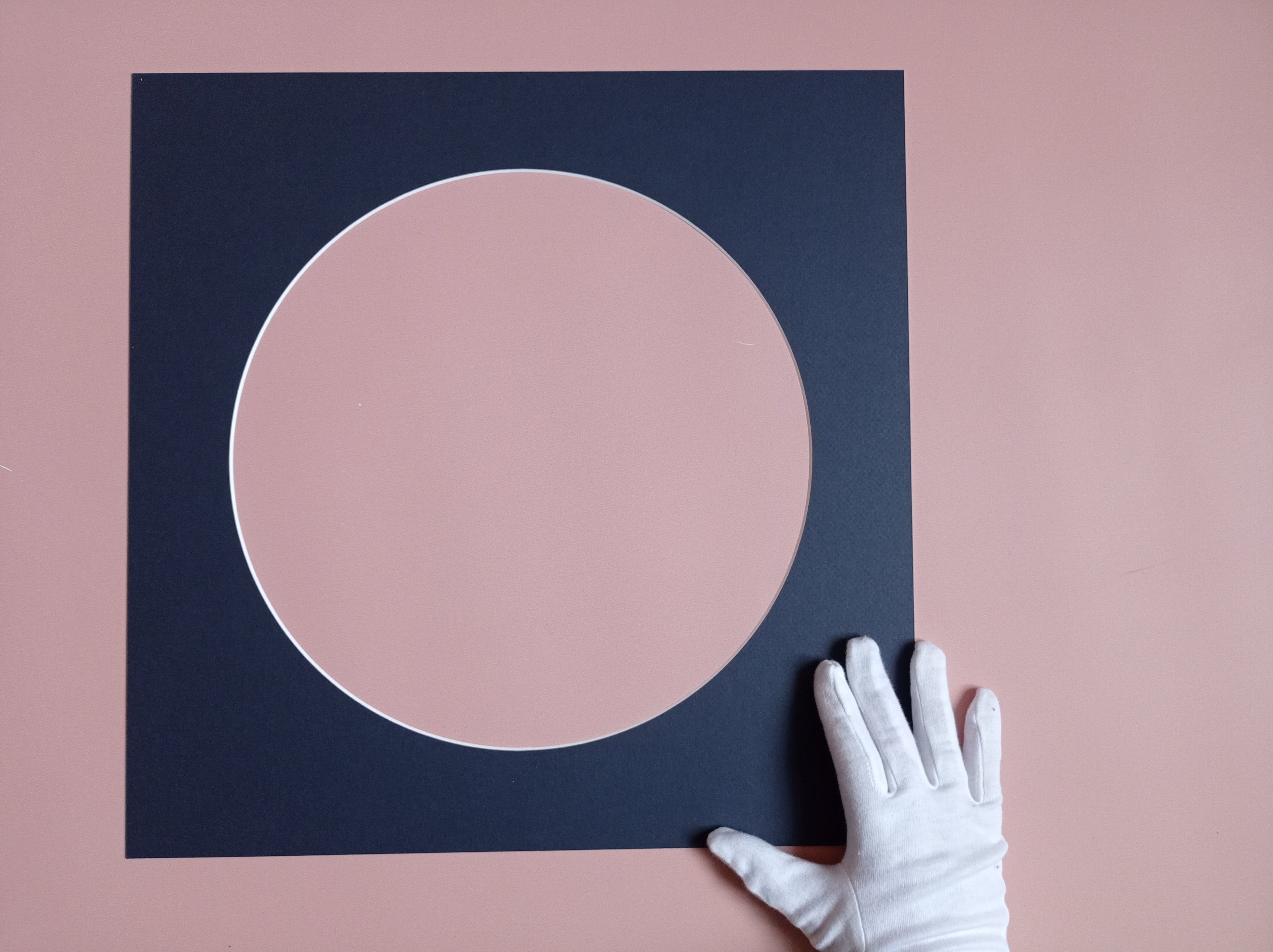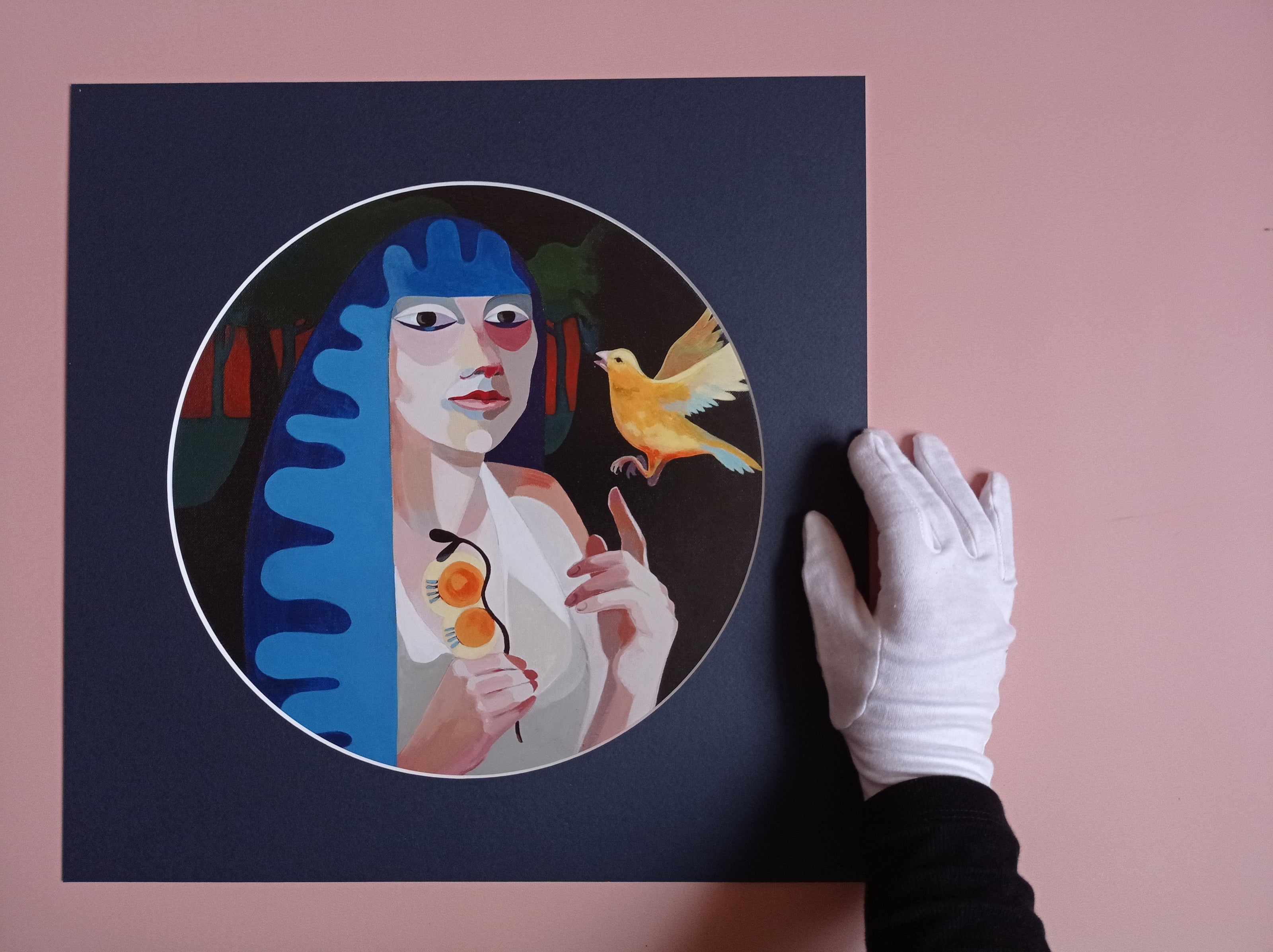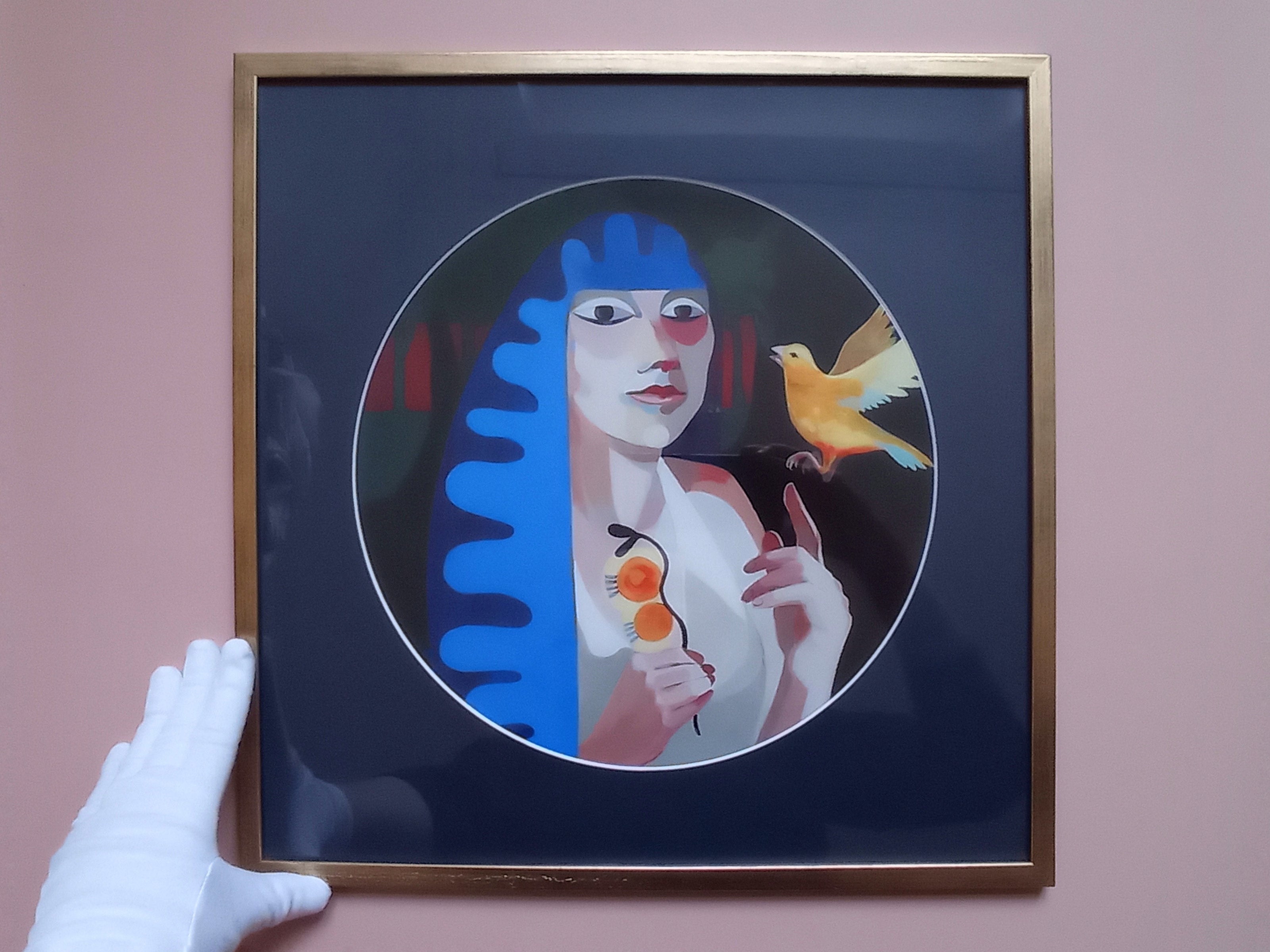Print FAQ
Things to know about my fine art prints, posters and canvas prints
What is special about fine art prints?
A fine art print is produced using the giclée printing process.
While many conventional printing processes, such as lithography, use the classic CMYK 4-color combination - in some cases with the addition of a Pantone-referenced spot color - giclée printers can use up to 12 individual colors.
This achieves greater depth and richness of color for the finished print, creating stunningly vibrant artwork with amazing reproduction.


Are fine art prints of higher quality than posters, for example?
Yes. Longevity, along with image quality, is a key feature of giclée prints because the type of archival inks used on giclée printers do not fade when displayed indoors under normal conditions. The colors retain their brilliance for a lifetime, which is stated as an archival life of 80 to 100 years.
Why are fine art prints more expensive?
The machines and materials used for fine art prints are all of very high quality and aim for longevity and precision. This is why a fine art print is more durable and true to the original compared to a poster print. You can see its quality.
Which papers do you use for your fine art prints?
After a few tests, I decided to print my pictures on Hahnemühle Pearl Giclée paper.
The Hahnemühle Pearl Giclee paper has a smooth orange peel texture and a resin coating that creates a fibrous feel and a satin-like finish. With a bright, neutral white base, it produces natural black and white images and offers vivid color reproduction. The combination of these characteristics gives the image the feel of an oil painting.
I have found that these characteristics allow my fine art prints to resemble my originals as closely as possible.


Where are your fine art prints produced?
I have my fine art prints produced by 'The Print Space'. Although I would have liked to work with a regional supplier, I was not satisfied with the test results. The Print Space produces my fine art prints in Germany, which is important to me, and has convinced me on all levels. The prints are first class, the delivery is safe and the customer service is excellent. I feel in good hands with my images at 'The Print Space' and I think that carries through to your home when you receive your order.
Although 'The Print Space' is not the cheapest supplier, for me it is the best.
And what about the posters?
Posters are printed with an inkjet printer on good, glossy poster paper.
Compared to fine art printing, the paper is somewhat thinner and not as high-quality in its properties. A poster does not offer the longevity and special features of a fine art print, but my posters are still really good prints. And they have another advantage: the lower price.


Where are the posters printed?
My posters come from 'Prodigi', a company in the UK that has several locations in Europe and prints my posters in Germany.
Both 'The Print Space' and 'Prodigi' offer print on demand and dropshipping.


What does print on demand mean?
Print on demand means that a print is only produced when a customer places an order on my website.
Dropshipping means that this print is then sent directly from 'The Print Space' or 'Prodigi' to this customer.
This principle gives me the opportunity to offer my images as prints, as I don't have to invest and produce in advance. I don't need any storage space and I don't run the risk of having invested in the wrong number of prints in advance. The fact that your print is sent directly to you via me without an intermediate station also reduces transportation routes and costs.
How long will it take for my order to reach me?
Depending on where you live, your poster orders will reach you in 2 to 14 days and your fine art prints in 1 to 5 days.
In most cases it is much quicker.
How are the prints packaged?
Depending on the size of the print, your print will reach you protected by tissue paper or a parchment envelope, packed in a sturdy cardboard envelope or, for large prints, in a cardboard roll.
Each of my fine art prints comes with a personal letter from me.




Do I need to be careful when I unpack my print?
You don't have to be so careful with posters. Just make sure your hands are clean and dry before you unpack your poster. If it has been delivered rolled, you can press it a little under books or similar before framing it or pinning it to the wall.
Fine art prints require more careful handling. Clean and dry hands are a must. If you have gloves to hand (thin white cotton gloves from the drugstore are very good, rubber gloves also work), this is ideal to protect the paper from marks made by your hands.
It is always advisable to at least lay out a rolled fine art print in before framing against the rolling direction. You can also press it to make it easier to frame afterwards.
The surface on which you lay out the print should be clean and free of grains of sand or similar so that these do not press into the paper when you press it.
Place the tissue paper in which the print was rolled up under the print, with the image side facing down. Weigh down the print, for example with books, for 1 to 2 hours.




What if I am not satisfied with my print?
If there is something wrong with your print, if it has errors or damage, please do the following:
Take photos of the damage and then please contact me directly. You can find my contact details here. Your damage will be replaced and you will receive a new print.
Please read my return conditions again here.
How and where are your canvas prints made?
I am happy to be able to have my canvas prints printed in my home town of Dresden. Where my pictures are professionally photographed, at Fotolabor Görner, the canvas prints are also made.
The same applies to canvas prints as to fine art giclée prints in terms of inks, printer and durability.
To give each of my canvas prints the feel of a real canvas painting, I have decided to hand-finish each one with color. I intensify the contrasts, make adjustments to the color nuances, add a little more luminosity and texture. The result is fantastic! And here too, the price is an important argument compared to the original.
How are canvas prints sent?
Mail Boxes ETC takes care of shipping larger works such as canvas prints. Shipping is fully insured. Details on shipping costs can be found here.
Depending on the order situation, it can take up to 8 weeks for me to dispatch your limited edition canvas print. The delivery time for originals of this size is approx. 11 days.
What is the best way to frame a fine art print?
I have designed my fine art prints so that you can easily find frames in the right sizes for them, whether in a store or online. The image motif is surrounded by a slightly wider white border. This means you don't necessarily need a passe-partout for your print to look good in the frame.
I recommend using a passe-partout to give a fine art print a higher quality look. It protects your print from direct contact with the glass and therefore contributes to its longevity. The outer dimensions of the passe-partout either correspond to the outer dimensions of the print or are larger, making the border around the image motif even wider. In general, a passe-partout allows a picture to "breathe" because it creates (even more) space between the picture and the frame and thus also draws attention to the picture. Finding the right frame and the right passe-partout is very individual. It is not for nothing that there are professionals who deal with framing.


How do I choose the right passe-partout and frame?
You can find beautiful frames on various websites on the Internet or offline in art stores, frame stores, specialist artists' markets (which often also offer professional framing) and also in some galleries.
You can also order the passe-partout online or buy it at the aforementioned places and have it cut to size.
If you order a passe-partout online, you must specify the outer dimensions as well as the dimensions of the cut-out and its position.
The outer dimensions correspond to the size of the frame you want to use. The cut-out should be 2 millimeters smaller on each side than the picture motif. For example: The image dimensions are 300 x 400 millimetres, the image section is therefore 296 x 396 millimetres.
This guarantees that there will be no white strip between the picture and the passe-partout and makes framing much easier.
In most cases, the position of the cut-out can simply be centered. You can also move the cut-out slightly upwards. The lower edge is then slightly wider than the upper edge, whereby the upper edge should not be narrower than the left or right edge. Planning the image section a little further up is also a good idea if, for example, you want to place a (rather) square motif in a rectangular frame in portrait format. This is a very feasible and exciting option!
If you do not want to make use of professional framing (which is not absolutely necessary), I would like to recommend an additional website.
Sven Meißner explains on www.bilderrahmung-berlin.de under "Things to know" in a simple and understandable way what you can look out for when choosing a passe-partout and a frame. He gives numerous tips that can make your decisions easier.
I would like to point out that this is not paid advertising. I discovered the site and found the content to be good. Sven Meißner and I do not know each other.
-

Example with round passe-partout
The color of the passe-partout picks up on nuances from the picture.
The white cut edge serves as additional framing.
-

The picture radiates
Thanks to the dark passe-partout, the figure and bird shine.
-

Gold as an accent
The gilded wooden frame underlines the sacred effect of the painting.



